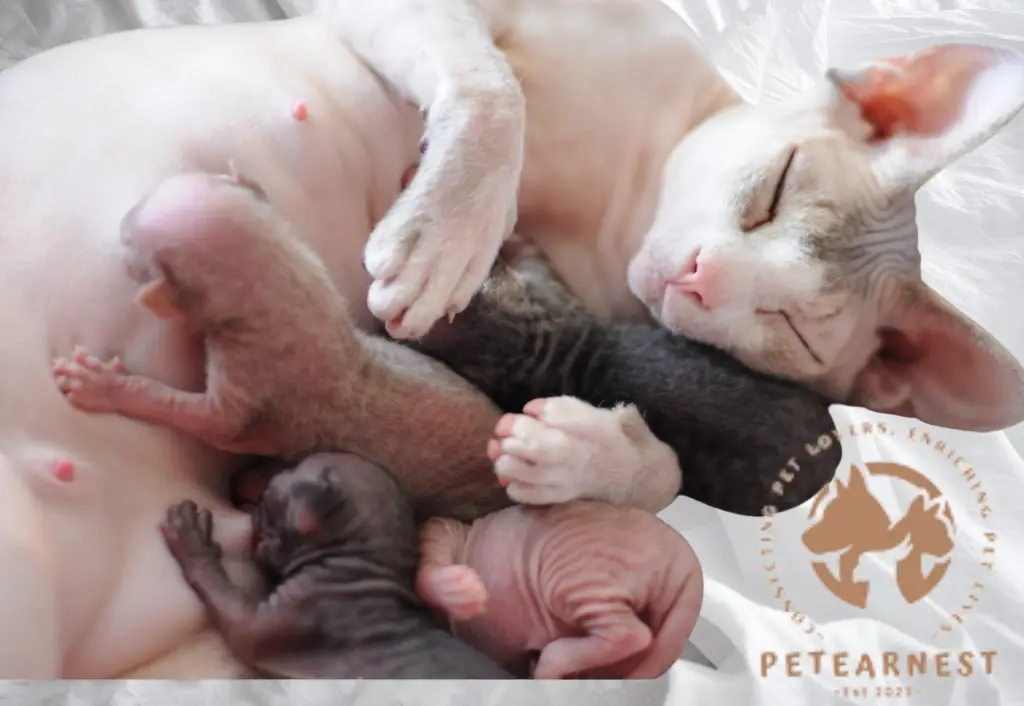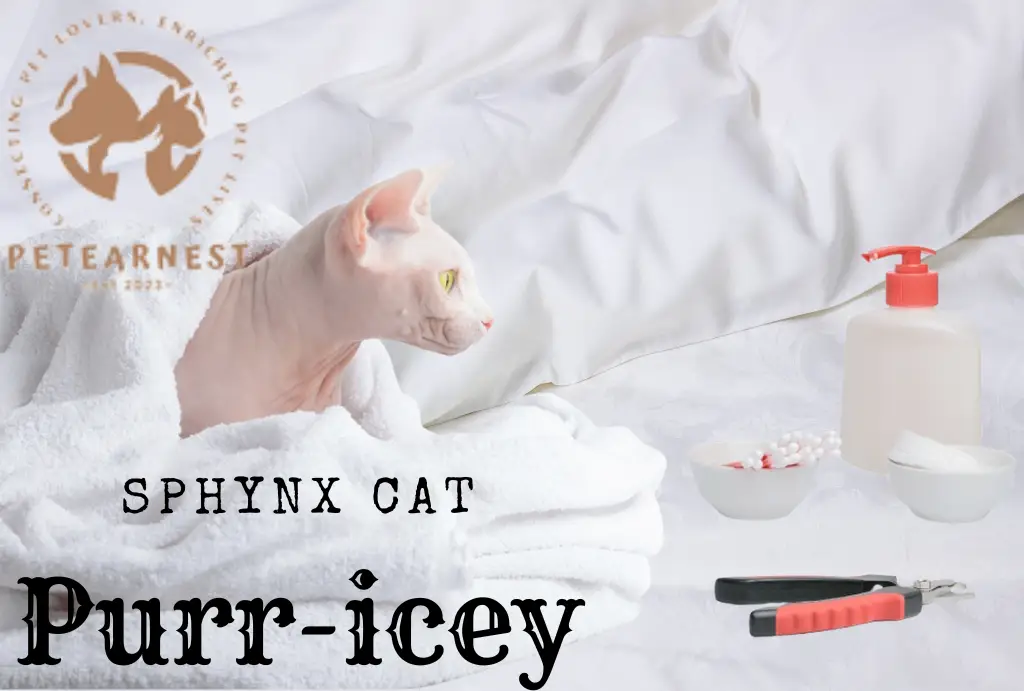The Sphynx Cat is a breed that is synonymous with ancient Egypt, but in reality, it has no direct lineage with the feline deities worshipped by the Egyptians. This hairless feline actually originated in Canada in 1966, with the birth of a mutant hairless male kitten named Prune. Despite its lack of fur, the Sphynx boasts a sleek and distinctive look that has earned it the nickname of “naked alien” in the feline world. While their appearance may be striking, Sphynx cats are also known for their unique personalities and characteristics. In this article, we’ll explore 7 surprising facts about the Sphynx Cat Egypt and reveal the enigmatic charm of this mystical feline.

1. They’re Not Actually Hairless – Unveiling the Truth About Sphynx Cat’s Unique Coat
The Sphynx cat is widely known as a hairless breed, but this is actually a bit of a misnomer. While they lack the typical furry coat that most cats have, Sphynx cats are not completely hairless. Instead, they are covered in a fine down coat that is soft to the touch and gives the overall feel of soft, warm chamois leather.
This unique coat is a defining characteristic of the breed and is a testament to the remarkable diversity of the feline world. Some Sphynx cats may also have a few sparse whiskers and eyebrows that add to their already unique personalities. In this article, we’ll explore the surprising truth about the Sphynx Cat’s “hairless” coat and unveil the enigmatic charm of this mystical feline.
2. The Birthplace of the Sphynx Cat Egypt: Uncovering the Canadian Origins of this Mystical Feline
The Sphynx cat, as we know it today, owes its origins to a chance genetic mutation in a domestic shorthair cat that gave birth to a hairless kitten named Prune in Ontario, Canada in 1966. Recognized as genetically special, Prune was bred with a Devon rex in an attempt to create a hairless breed. The resulting cats were initially called Canadian Hairless Cats, but were later renamed Sphynx because of their resemblance to the cats depicted in Egyptian hieroglyphics.
However, the breed’s shallow gene pool made them prone to health issues, and despite attempts to revive the line, Prune’s lineage eventually died out in the early 1980s. This fascinating history reveals the intricate evolution of the Sphynx cat, a truly unique and mystical feline.

In 1975, a couple from Minnesota discovered a hairless kitten among their farm cats and named her Epidermis. The following year, they found another hairless kitten, Dermis, and both were sold to an Oregon breeder who used them to develop the sphynx line. Around the same time, three hairless kittens were discovered roaming the streets of a Toronto neighborhood and were named Bambi, Punkie, and Paloma.
These kittens were crossbred with Devon rexes, ultimately leading to the development of the sphynx breed we know and love today. Through dedicated breeding efforts, breeders were able to overcome early health issues and establish a strong and healthy lineage.
3. Is the Sphynx Cat Hypoallergenic? Exploring the Truth Behind This Common Myth
The Sphynx cat is a unique breed of feline that has gained popularity for its hairless appearance. One question that frequently arises in the minds of cat lovers is whether the Sphynx cat is hypoallergenic. Unfortunately, the answer to this question is no. Despite rumors that suggest otherwise, the Sphynx cat is not hypoallergenic.
This breed of cat, like all others, produces Fel d 1, an allergenic protein found in cat saliva and skin secretions that can cause allergic reactions in sensitive individuals. Therefore, if you are allergic to cats, it is not advisable to assume that you can own a Sphynx cat without experiencing any allergic reactions. In fact, investing in a Sphynx kitten could be a costly mistake if you’re allergic to cats.
So, while the Sphynx cat may be a fascinating and unique breed of feline, it is not the solution for cat lovers who suffer from allergies. If you’re allergic to cats, it’s best to speak to a medical professional or an allergist for advice on how to manage your allergies.
4. The Fascinating Way Sphynx Cats Maintain Balance Even Without Whiskers
Sphynx cats are undoubtedly charming with their hairless, wrinkle-filled bodies and distinctive personalities. However, many people wonder how these felines navigate without their signature whiskers. While whiskers are important for a cat’s orientation, Sphynx cats do not rely on them for balance. Instead, they use their tails to maintain balance and maneuver around their surroundings.
Whiskers help cats determine if they can fit into tight spaces, but Sphynx cats have other sensory organs to aid in their movement. Despite the lack of whiskers, Sphynx cats are agile and graceful creatures, capable of amazing feats of balance and coordination.
5. Sphynx cats have a higher body temperature than other cats.
Sphynx cats are known to have a higher body temperature than most other cat breeds. While the average feline body temperature is between 100.5 and 102.5 degrees Fahrenheit, Sphynx cats can have a body temperature that ranges from 99 to 102.5 degrees Fahrenheit.
The reason for this higher body temperature is thought to be related to their lack of hair. Without a coat to keep them warm, Sphynx cats must regulate their body temperature internally, which can lead to a slightly higher baseline temperature.
While this may not seem like a significant difference, it can be noticeable to Sphynx owners who may find their cats to be warmer to the touch than other felines. It’s also important to note that any changes in a cat’s body temperature, whether higher or lower than normal, can be a sign of an underlying health issue and should be checked by a veterinarian.
6. Sensitive Skin Secrets: How to Care for Your Adorable Sphynx Cat’s Unique Coat
Sphynx cats are a breed of feline that stands out for their distinct, hairless appearance. Though they have a striking look, their unique coat requires special care to keep them healthy and comfortable. Sphynx cats have sensitive skin, which means they are more prone to skin issues, and their skin is exposed, making them susceptible to environmental factors like sunburn.
To keep your Sphynx cat healthy, it’s important to protect them from the elements. While they can go outside, they should not live outdoors. Sphynx cats secrete oil, so they require regular bathing, and their ears need frequent cleaning. Despite their lack of fur, Sphynx cats have a high metabolism, which means they will consume more food than the average cat.
we recommends that Sphynx cat owners take preventative measures to care for their skin. Since Sphynx cats lack pigmentation and fur, they have a predisposition to get sunburned. Installing sunblock shades or screens on windows can help lessen the impact of the sun’s rays, and applying baby sunscreen to their ear tips and bridge of nose can protect their skin.
It’s important to note that Sphynx cats can still aggravate allergies caused by pet dander. Even though they are hairless, the dander of the Sphynx tends to remain on their skin, so they may not be the best fit for individuals with pet allergies.
In conclusion, Sphynx cats require specialized care to keep them healthy and comfortable. Their unique coat requires regular bathing and cleaning, and they need protection from environmental factors like sunburn. Though they may require extra attention, Sphynx cats are a healthy breed that make great companions and provide endless entertainment for their owners.

7. Don’t Judge a Book by its Cover: Debunking the Myths about Sphynx Cats
Cats have a reputation for being portrayed as the antagonists in movies and TV shows. From the menacing tiger Shere Khan in “The Jungle Book” to the seductive Catwoman in the Batman comics, felines are often typecast as the bad guys.
While it is important to appreciate these classic villainous characters, it is unfair that cats are consistently depicted in this negative light by Hollywood. Sadly, the Sphynx cat, a unique breed that boasts a gaunt, angular face, large alien-like eyes, and smooth, chamois-like skin, is often viewed with unnecessary wariness.
Due to its distinctive appearance, the Sphynx is often labeled as unattractive, unsettling, and even malevolent. Yet, anyone who has ever had the pleasure of spending time with one of these charming creatures can attest to the fact that the Sphynx is an elegant and gentle creature that defies such shallow judgments.
In conclusion, the Sphynx cat Egypt is a unique and fascinating breed with a rich history that dates back to ancient Egypt. Despite its unconventional appearance, the Sphynx cat has many endearing qualities that make it a beloved pet for many cat lovers. From their warm and affectionate nature to their high-maintenance grooming needs, the Sphynx cat truly is a one-of-a-kind feline that continues to captivate and intrigue cat enthusiasts around the world.
What’s your favorite thing about Sphynx cats? Share your thoughts in the comments below, and don’t forget to check out our other articles on fascinating feline breeds and caring for your beloved pets.


